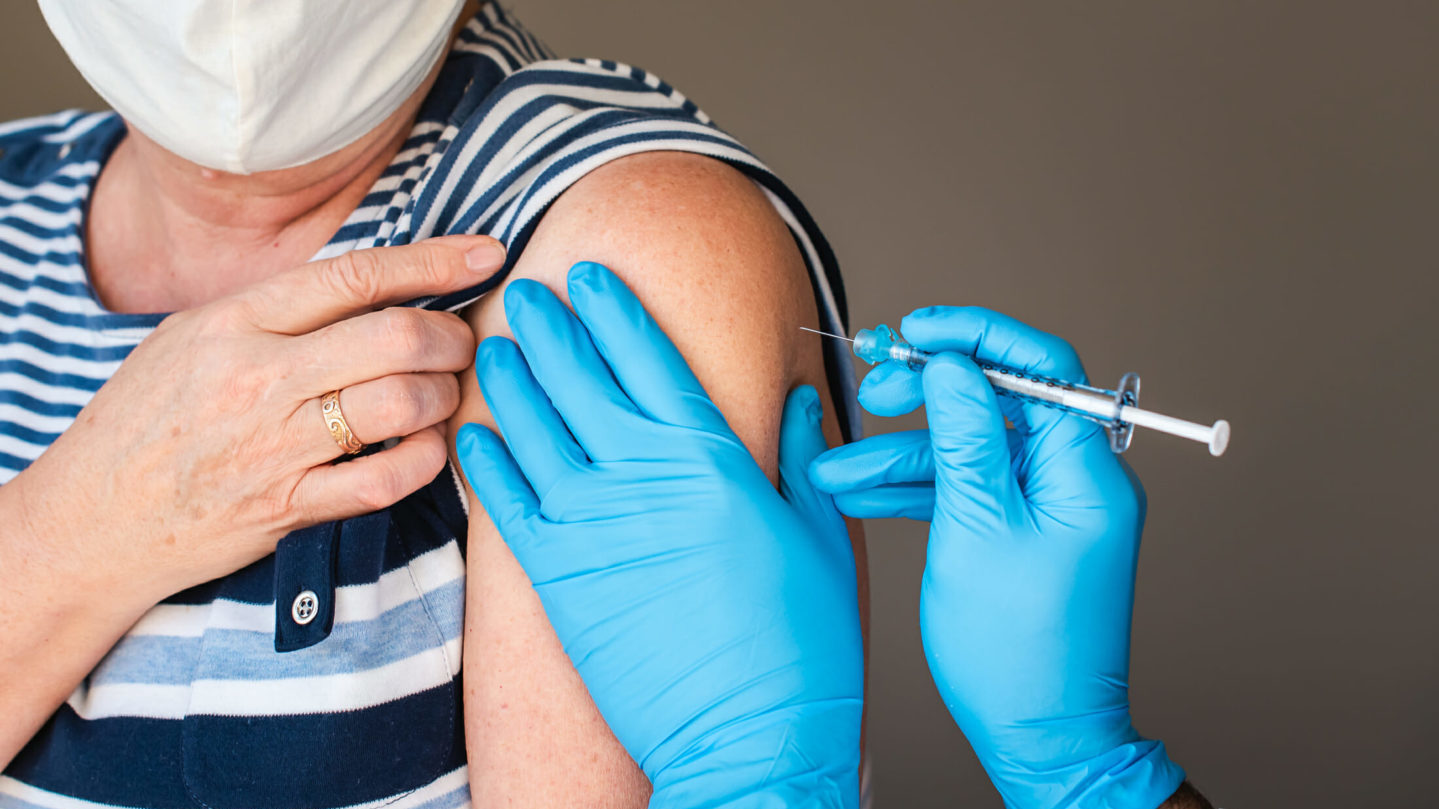
Federal health officials have released influenza vaccine recommendations for the 2021-2022 season, with notable updates on the type of drugs available and guidance on administering COVID-19 and flu shots together.
Influenza vaccination is recommended as usual for individuals aged 6 months and older — not only to reduce influenza illness, but to lessen the prevalence of virus symptoms that might be confused with those of COVID-19, according to the Advisory Committee on Immunization Practices. High flu vaccination rates also may help prevent excess burden on the healthcare system during the pandemic, the group said.
This season, only quadrivalent vaccines will be available, reported ACIP, whose independent experts advise the Centers for Disease Control and Prevention. These vaccines provide additional protection when compared with older trivalent vaccines, countering two prevalent type A and two type B viruses.
Safety of co-administering COVID and flu shots
Questions about the safety of co-administering COVID-19 and flu vaccines have arisen in long-term care circles after federal officials announced last week that they may approve COVID-19 booster shots as early as Sept. 20 — just when LTC facilities’ flu vaccine clinics may be in full swing.
There are no concurrent use studies for COVID-19 and any other vaccine, the CDC and other experts have noted. Acknowledging this lack of data, CDC guidance currently states that “COVID-19 vaccines and other vaccines may now be administered without regard to timing.” This includes same-day administration of COVID-19 vaccine and other vaccines, as well as co-administration within 14 days, according to a CDC webpage last reviewed on Aug. 25.
It is unknown whether co-administration will increase the likelihood of side effects after COVID-19 vaccination, including with other vaccines already known to raise the odds of such reactions. These include adjuvanted vaccines, which are often recommended for older adults to increase immune response.
When deciding whether to co-administer another vaccine(s) — such as a flu shot — with a COVID-19 vaccine, consider the following, CDC says:
- Whether the patient is behind or at risk of becoming behind on recommended vaccines
- The patient’s risk of vaccine-preventable disease (e.g., during an outbreak or occupational exposures)
- The reactogenicity profile of the vaccines [likelihood of reactions]
In addition, providers should regularly consult the following pages for updates, as the information may change, ACIP advises:
- COVID-19 Vaccine FAQs for Healthcare Professionals: https://www.cdc.gov/vaccines/covid-19/hcp/faq.html
- Interim clinical guidance for the use of COVID-19 vaccines, under the heading “Co-administration of COVID-19 vaccines with other vaccines”: https://www.cdc.gov/vaccines/covid-19/clinical-considerations/covid-19-vaccines-us.html.
- ACIP recommendations for the use of COVID-19 vaccines: https://www.cdc.gov/vaccines/hcp/acip-recs/vacc-specific/covid-19.html
Some clinicians argue that there should be a delay between the COVID-19 and other shots. This reasoning is based on the original clinical trials requirements of the U.S.-endorsed COVID-19 vaccines. Participants in these studies observed a 14-day waiting period after any other vaccinations before they could receive their trial COVID-19 shots.
In related news:
U.S. to reduce COVID booster shot wait time to six months post-vaccination Federal regulators may approve COVID-19 booster shots starting six months after recipients finished their first round of mRNA shots, according to the Wall Street Journal. This shaves two months off the original waiting period first proposed by the Biden Administration last week. The news comes just after Pfizer-BioNTech received full FDA approval for its vaccine and as it pushes for booster shot approval as well. COVID-19 vaccine makers Moderna and Johnson & Johnson are working with the federal agencies to move their drugs toward full approval and a booster shot go-ahead as well.
Flu vaccine makers expect another record year Influenza vaccine makers expect another record year of flu vaccinations and are preparing their deliveries accordingly, according to FiercePharma. “Despite the widely deployed COVID-19 vaccines from Pfizer, Moderna and Johnson & Johnson, this flu season could prove just as precarious as society tries to roar back to pre-pandemic life,” the pharmaceutical news outlet reported.



